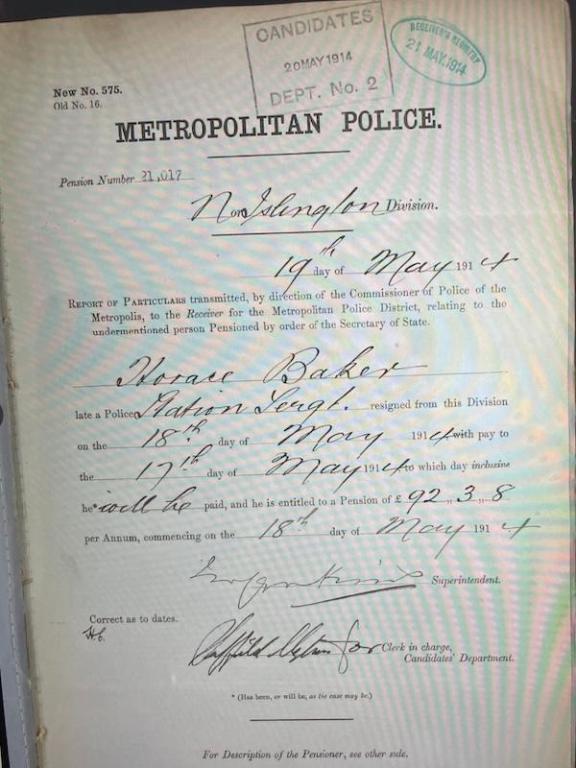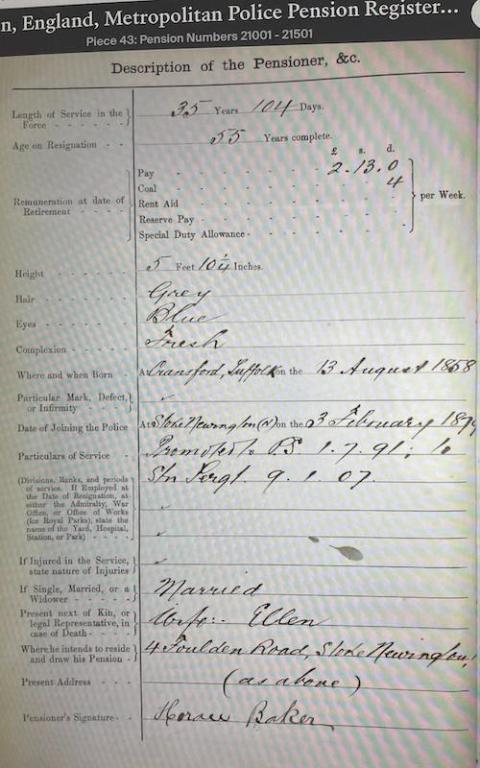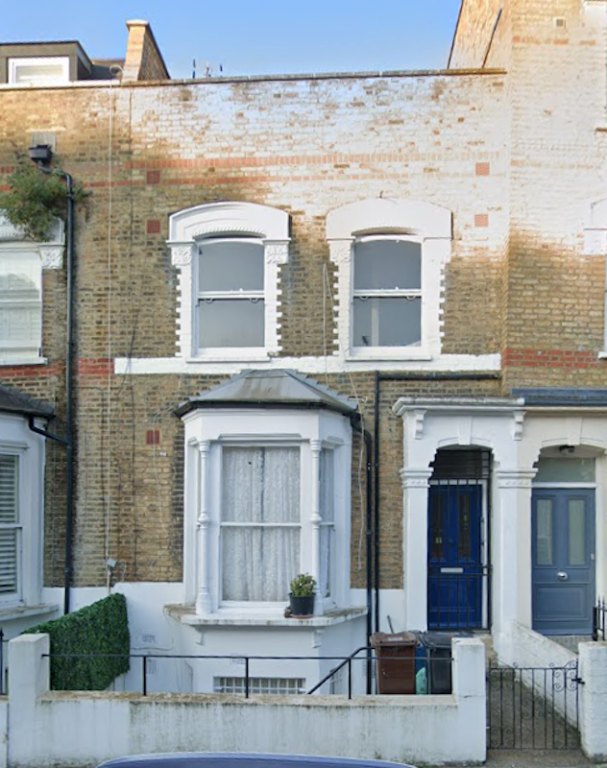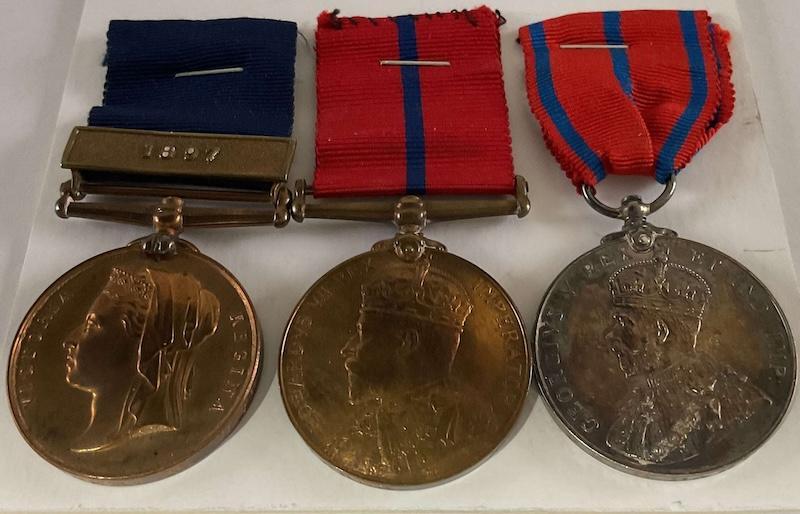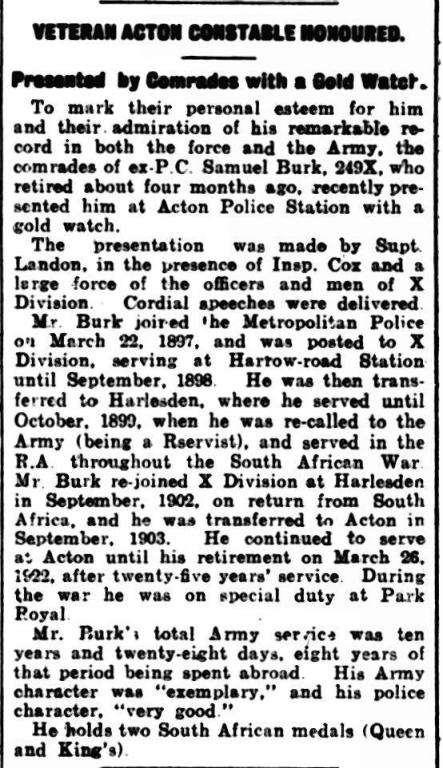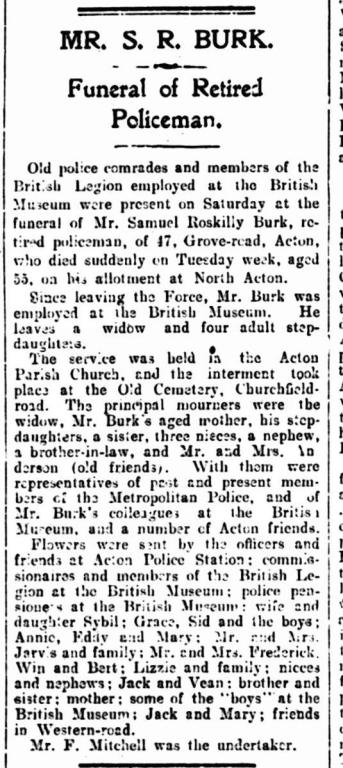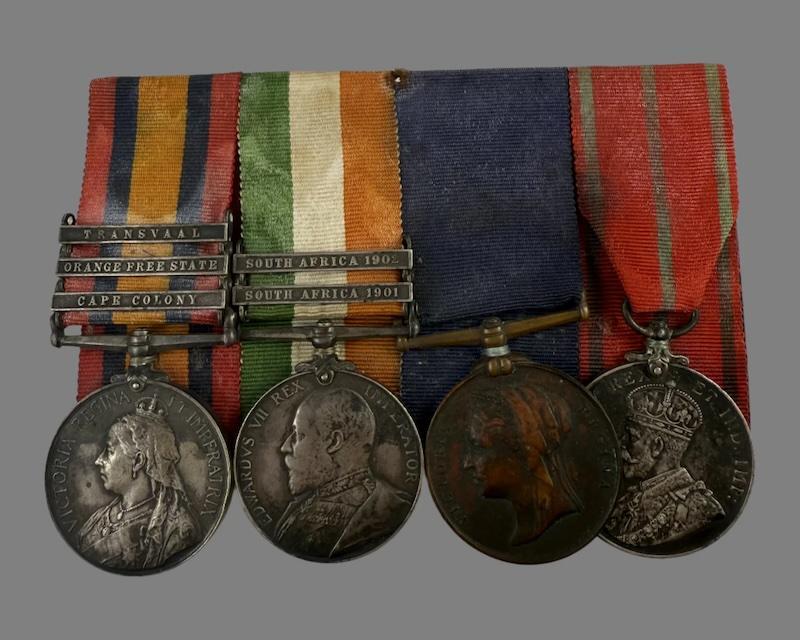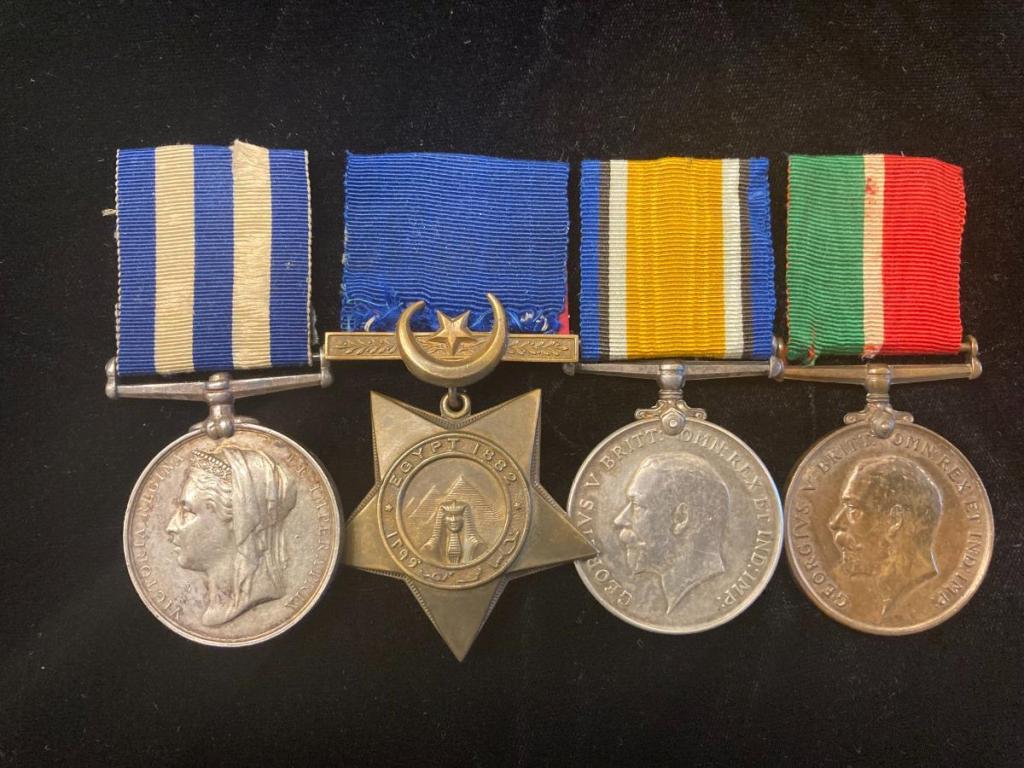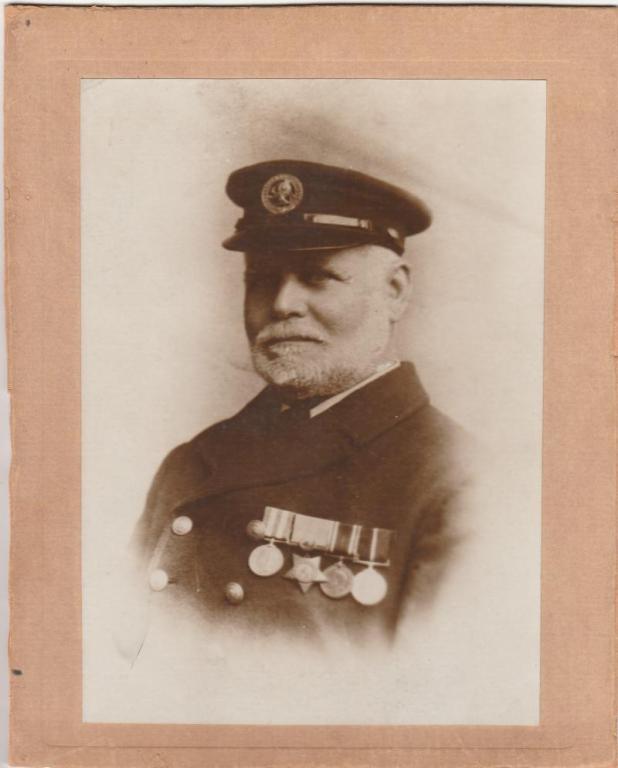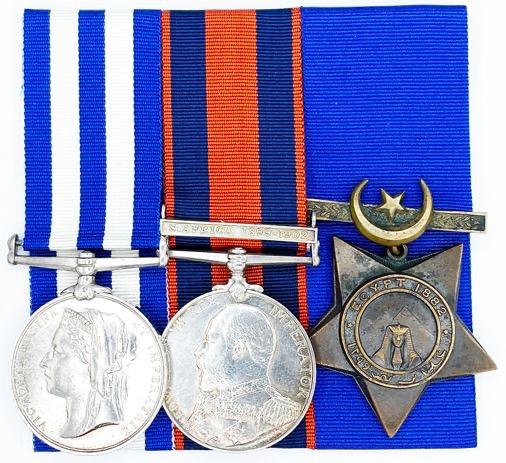-
Posts
1,800 -
Joined
-
Last visited
-
Days Won
10
azyeoman last won the day on January 16
azyeoman had the most liked content!
About azyeoman

Profile Information
-
Gender
Male
-
Location
The Grand Canyon State
-
Interests
Historical Research; 30+year OMRS member and Life-Member OMSA.
Recent Profile Visitors
21,270 profile views
azyeoman's Achievements
-
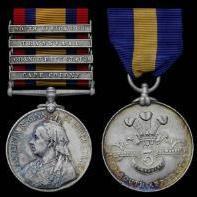
My First Crimea Medal
azyeoman replied to TracA's topic in Great Britain: Orders, Gallantry, Campaign Medals
There’s nothing better than collecting named British medals as there is, in most cases, a huge amount of info on the recipient - biographical, ancestral, regimental or ship wise, not to mention The historical aspects of the war, campaign and its battles. I’m glad to see you like it! Beware, it’s addictive. 🍻 -
Baker's Metropolitan Police trio arrived, and I now have the exact naming to share with you. The 1887 Victoria Jubilee with 1897 clasp is engraved in script.P C, H. BAKER. N. DIVN The 1902 EVII Coronation is engraved P. S. H. BAKER. N. DIV. The 1911 GV Coronation is P. S. H. BAKER. The naming is exactly as should be for the respective medals and Baker's rank. There was some confusion as to the naming as the dealer didn't have the exact naming correct on his site, but now all is clear. They are all with their original ribbons which are stitched in blue thread at the top. This group is one of about 600 full trios (1887-1911) awarded to serving officers; although with retired officers being recalled in large numbers for both the 1902 and 1911 Coronations, it takes the number of full trios available to about 1800 in total. Those who served right through the full series of events are more desirable. Interestingly, 1897 trios are actually scarcer, as there were more 1897 clasps issued than 1897 medals.
-
Hi Owain, I sincerely appreciate you taking your time and looking for Burk’s grave. It’s a shame there’s no headstone, but over the years, unless CGWC related, I’ve found very few of them. It makes you wonder what percentage of people were buried in unmarked graves. I presume headstones must have been expensive and in1929, with the depression, we’re likely to have been considered much too expensive in light of the economy. thanks so very much! cheers, John
-
Horace (George Spalding) Baker was born on 12/13 August 1858 in Cransford, Suffolk, England. He died in the June Quarter of 1929 in Hackney Rd. London, England. His mother, according to the 1861 census, was a widow – Sarah Baker (1815-) from Rendham, Suffolk. There is no father’s name given. She had seven children, two of which were twin boys. Later George (Horace) lived with his grandfather, George Spalding who was a farmer; he worked as a seed grower/agricultural laborer before joining the Met. He joined the Metropolitan Police on 3 February 1879 and served in N Division, Stoke Newington. His Warrant Number was 63266. He was promoted to PS on 1 July 1891 and to Station Sergeant on 9 January 1907. Before retiring, he earned £2.13. and was given 4p for coal per week. He retired as Station Sergeant N Division, Islington on 18 May 1914 with a pension of £92.3.8p when 55 years old after serving 35 years, 104 days with the Metropolitan Police. The 1911 Census shows he married Ellen?, who was five years older than him, and worked for the government in the Police Court as a Female Attendant. They lived a 4 Foulden Rd. Stoke Newington, which still exists. (see below). They had six children: Gertride, Leslie, Ethel, Walter, Ernest and Dorothy. He was 5’1/4” tall with blue eyes, fresh complexion and grey hair. Many thanks to Mark Reid for helping with Baker's ancestral and police details!
-
Jubilee Police Medal 1887 with 1897 clasp to PC H Baker, N. Division Coronation Police Medal 1902 in Bronze P.C. H. Baker N. Division Coronation Police Medal 1911 in Silver. P.C. H. Baker. N. Division Can anyone help by looking up PC H Baker in KEMP's The Metropolitan Police The Men And Their Medals 1879 - 1911? I'd like to know his Warrant Number and any other info regarding him. Thanks very much in advance! All the best, John
-
Good morning Owain, It's always good to hear from you. I hope and trust you and your family are well and having a good year! That's very kind and generous of you to have a look and find Samuel Roskilly Burk's grave. The only info I have is from the article, which states, that his service was in Acton Parish Church and the burial was at the "Old Cemetery, Churchfield Road". I looked it up and this is what I came across: https://www.parksandgardens.org/places/st-marys-burial-ground-rest-garden In 1979 the cemetery was partly cleared to make a public garden laid out with a paved area, raised planters and seating along the Churchfield Road boundary; headstones largely against the perimeter walls although some remain scattered among the grass in which there are also various trees and a number of flower beds; a tarmac path between the two entrances. The site is bounded by iron railings along Churchfield Road and part of the east boundary, with an iron entrance gate from Churchfield Road; brick walls predominantly around rest of the site. St Mary's Burial Ground was established here in 1863 on 1 acre of land that was purchased by the Acton Vestry to provide additional burial land for the parish church of St Mary. The land had been part of a field called Conduit Close that had a number of springs, providing the village with water. By 1929 the cemetery was almost full. In 1979 it converted into a public garden laid out with a paved area, raised planters and seating along the Churchfield Road boundary. It was partly cleared, with headstones largely set against the perimeter walls although some remain scattered among the grass. Perhaps his headstone is along the perimeter or one of the ones scattered among the grass. It would be wonderful to photograph it. Thanks so much in advance for having a walkabout and a look. I appreciate it very much! All the best, John
-
I recently acquired a nice medal group consisting of the following: QSA: CC, OFS, TR – 74907 GNR. S. BURK, R.H.A. KSA: SA01, SA02 – 74907 GNR. S. BURK, R.H.A. 1897 Jubilee (Met) – P.C. S. Burk. X DIVn 1911 Coronation (Met) – P.C. S. Burk. I have found out a considerable amount regarding his QSA & KSA and have also learned that his name is Samuel Burk and that he was a Police Constable in the Acton Division, which I believe is X Division from what is on his 1897 Jubilee Medal. I don't have any details as to his badge number etc for him as a PC nor any copies of the rolls definitively mentioning him as being awarded the '97 Jubilee and the '11 Coronations medals (Metropolitan Police issues). I'm certain he was, but like to have copies of the pages to go along with the file that I build for each medal recipient. Any and all help would be GREATLY appreciated. I also know where he is buried, but unfortunately there isn't a photo of his headstone on Find A Grave. I've added three attachements regarding Pte/PC Samual Burk as they are interesting. There's also a photo of his group, which badly needs cleaning as I'm sure he'd never have worn them looking like they presently do. Thanks in advance and all the best.
-
That’s a stunning addition; congratulations! ATB, John
-
Fortunately, many on another forum were able to help me find the info on "George Smith". So, here is the biographical info etc. on "George Smith". I'm especially grateful to Kevin Asplin for his expertise at the NA and for researching and providing all the papers need that opened the door to further ancestral research on FMP. He does exceptional work and quickly too, all for a modest fee. 'George Smith' was an alias; his real name was John Virgo Skip. His real name wasn’t noted until April 1876, but the census returns, birth and death details as well as the 99th’s Pay Roster of 1 July to 30 September 1876 all confirm that was his real name. He was born in Lambeth in 1838. His father John Skip (1814-) was a greengrocer, and his mother was Ann Skip (1816-). He had a younger brother, William who was born in 1840. They had an 18-year-old domestic servant Elizabeth Read living with them. Later, John Virgo was a porter, and enlisted in the 53rd at Westminster Police Court on 19 October 1854 when he was 19 years old. When with the 53rd Ft. He was a Pte. From 19 Oct. 1857 to 19 June 1858. He went AWAOL at Christmas 1857 and was tried and imprisoned on 31 Dec 1857 until 19 January 1858. He was released and continued to serve in the 53rd Ft. until 31 January 1866 when he transferred to the 99th Regt as a private. He was promoted to Corporal on 16 January 1866 and served as such until 12 June 1867. He reengaged in Natal for 11 years and was promoted to Serjeant on 1 September 1869. He went AWOL again on 13 Oct 1869 and was arrested and tried on 14/15 Oct. 1869. He was reduced in rank to private on 16 Oct. 1869 and served as such until 9 Nov 1878 when he left the forces at Chatham. Despite his two trials by court martial for being AWOL, and entered four times in the Regimental Defaulters Book, he had four good conduct badges. He served a total of 21 years and 15 days. He served over a year and a half in the East Indies (India); over five years in China and about a year and a half in the Cape of Good Hope. He was 40.5 years old and 5’6.5” tall with a fresh complexion, hazel eyes and light brown hair. His intended place of residency was Newnham, Gloucester. In the 1881 census, he was married to Eliza Saunders who was a dressmaker and five years older than he was. They married in 1878 and were living in Paddington (Marylebone), London She was from Blakeney, Gloucester. He put his place of birth as Camberwell, Surry and his profession as a Verger.
- 1 reply
-
2
-
One of my very favorite groups is to Trinity House Master Pilot Frederick George Utting. There is an article on him entitled "Trinity House, Master Mariners and World War I Mercantile Marine Medals" in the Journal of Orders and Medals of America (Vol. 75, No.2 (March - April - May - June 2024). It's a very nice and unusual group and there is a photograph of him wearing the medal group*. * Note the medals are not in the correct order, but are shown as Utting wore them.
-
Here is a terrific group! Egypt and Transport medal group to Surgeon John Brunt, Royal Navy, later Mercantile Marine Egypt and Sudan 1882-89, dated reverse, no clasp officially named to: J. Brunt. Surgn. R.N. H.M.S. “Agincourt” Transport 1899-1902, 1 clasp, S. Africa 1899-1902 officially named to: J. Brunt. Khedive’s Star, dated 1882, unnamed as issued. The Egypt pair nearly very fine, the second good very fine, and an unusual combination. John Brunt was born on 24 September 1851, and having qualified as a doctor entered the Royal Navy as a Surgeon at Plymouth Hospital on 1 October 1879. He was next appointed to Netley Hospital (November 1879) and joined his first ship H.M.S. Royal Adelaide in March 1880, and subsequently served as Surgeon aboard London (April 1881), Duke of Wellington (June 1881), and Agincourt (September 1881). Whilst employed in the latter ship in Egyptian waters he earned the Egyptian medal and Khedive’s bronze star. He served next in Boscawen (September 1883), R.M.A. Division Eastney (September 1884), Flora (August 1886) and Duke of Wellington (April 1889). On 21 June 1889 he was allowed to withdraw from the Royal Navy after nine years service with a gratuity of £1,000.00 under the terms of an Order in Council dated 1 April 1881. In 1900 he joined the Merchant Marine as a Surgeon, served with the Union Castle Steamship Company and whilst aboard the Hawarden Castle employed on Transport Duties during the Boer War he gained entitlement to the Transport medal and clasp.



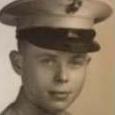


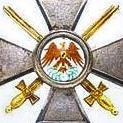
(1).thumb.jpg.38cff8cd9c5d55311a4208b0a83448ba.jpg)
.thumb.jpg.8f11964f4d04824d881c313e10a95c32.jpg)
